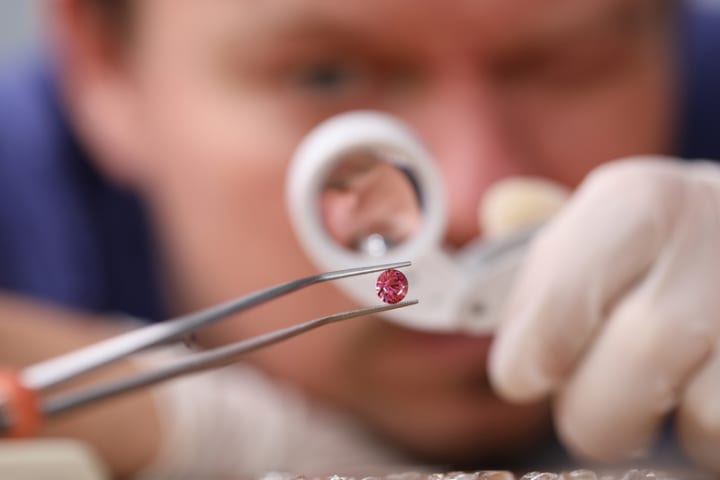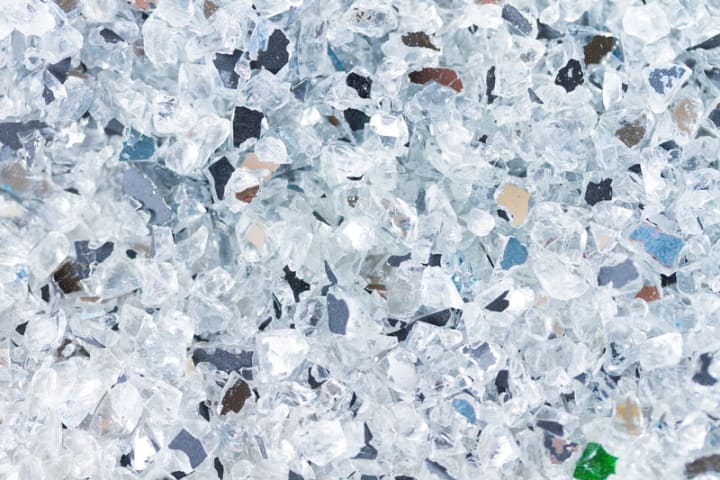Diamonds Are Forever; Fakes Are For Never
10 ways to tell if your diamond is real

Allow me to begin with three possible scenarios…
Scenario 1
So, you find yourself completely out of cash, and urgently needing to sell something of value.
You reluctantly toy with the idea of flogging your limited edition Tracey Emin cigarette box, bemoan the dreadful prospect of parting with your MacBook Pro, and can’t bear the thought of trading in your old Renault Clio.

But then you recall the diamond necklace you inherited from a long lost great-aunt, and you desperately rummage through the attic in search of the forgotten treasure. You eventually find it, and you’re about to head for the local pawnbrokers, eager to find out what it may be worth, when a troubling question suddenly arises.
How can you prove these diamonds are real?
After all, how embarrassing, humiliating and disappointing it would be to discover that your famously batty great-aunt had got it all wrong. You consider the possibility that these sparkly stones might not, in fact, be real diamonds after all. But how do you tell?
Scenario 2
Your beloved is finally down on one arthritic knee, proffering a sparkling rock in a velvet-lined trinket. The moment is truly unexpected and utterly romantic, and the stone certainly LOOKS like a real, expensive diamond.

But how can you be sure it’s the real deal?
You don’t want to kill the moment by demanding to know, right here and now. But, on the other hand, you are desperate to know whether the sparkling gems your beau now clumsily forces onto your trembling finger are actual diamonds.
Scenario 3
You’re browsing through the vintage diamond rings on Preloved, and you stumble upon the most beautiful stone you have ever seen. And it seems like a steal for the price.

But how can you know you aren’t being sold a dud?
The point is, it could be a really useful thing to know at some point in your life.
So, how do you tell if a diamond is real? Well, there are actually quite a few methods you could try, and all of them can be attempted in the comfort of your own home.
Before we go any further though, a word of caution. That is, if after completing the tests below, you are still in any doubt at all about the authenticity of gemstones you have bought, have been given, or are selling, then please seek the opinion of a professional jeweller or valuer.

Half of the following verification methods come courtesy of celebrity jeweller brothers, Bobby and Tommy White. The award-winning millionaire pair rose to fame when they appeared on a Channel 4 documentary called Million Pound Jewellers a few years ago. They have since gone on to supply and design high-end, luxury jewellery for numerous A-listers in the UK and the US. They really know their stuff!
How To Identify A Fake Diamond
(or, as Tommy and Bobby call it, a “jackal”)
Method 1 - The Fog Test
Simply breathe onto your gemstone to create a fog, just as you would if you were trying to fog up a mirror. Diamonds disperse heat very quickly, so the condensation won’t stick to the surface and the fog should, technically, evaporate in a flash. But if the foggy film remains on your stone for more than 2-3 seconds, then it is quite likely you have a fake.

Method 2 - The Electronic Test
In the Amazon era, it is extremely easy to get your hands on a battery-powered diamond tester, which will enable you to test your diamond’s authenticity, as well as giving you a wealth of other information about your stone’s properties. These devices range hugely in price, but an inexpensive tester should be enough to give you the information you need, quickly and easily.

Method 3 - The Carat Weight Scale Test
Sticking with the Amazon theme - although other retailers are available, obviously - it is possible to purchase a portable carat scale for a very reasonable price. This should give you an accurate weight for your stone.
Real diamonds are usually at least 50% lighter in weight than fake gems, so you can compare the weights of a few different stones you own to work out whether your jewel is likely to be the real deal. If you have an authentic diamond, you can work out its carat weight by recording the weight in grams, and dividing this number by 0.2.
Method 4 - The Newspaper Test
Just as we noted that diamonds disperse heat at a high rate, they’re also very good at dispersing and refracting light. If you place your gemstone over some small bold text in a newspaper, and you can read the print through the stone, then you may have a glass or quartz diamond, rather than a pure diamond. It will be very difficult to see through a real diamond.

Method 5 - The Flaw Test
The great majority of real diamonds contain flaws (known as “inclusions” in the jewellery trade), such as tiny cracks, specks and dimples, or traces of carbon. These affect a diamond’s clarity, so the fewer the flaws, the better quality the diamond.
You won’t see these imperfections without a special kind of magnifying glass though - you will need to purchase a simple diamond loupe to identify any inclusions.
If there are no apparent imperfections when viewed through a loupe, then your diamond is either a fake (such as a glass Cubic Zirconia stone), or an extremely rare, priceless diamond.
Sadly, it is more likely to be the former. However, a professional valuation by a qualified jeweller should dispel any doubt.

Method 6 - The Metal Test
Diamonds will always be set in precious metals such as gold, silver or platinum. If when you check the hallmark on your jewellery you see the mark (CZ), then your diamond will almost certainly be a fake.
Method 7 - The Water Test
One of the properties of a real diamond is a high density (more than three times the density of water). If you place your stone in a glass of water and it sinks, it is more likely to be a diamond, whereas if it floats on or close to the top of the water line, then it is more likely to be a fake.
A word of caution with this one, though. As Tommy and Bobby discovered when they conducted this test in their video, it isn’t always reliable. As with all of these tests, it’s best to try a few of them to get a fuller picture.

Method 8 - The Colour Test
Diamonds are known for their sparkle, but contrary to popular belief, high-quality diamonds do not tend to reflect a great variety of colours.
Low-quality diamonds and fake stones will give off a spectrum of rainbow colours which, whilst very pretty, won’t significantly impact your bank balance should you decide to try and sell it.

And finally, two tests that are not for the fainthearted!
Method 9 - The Sandpaper Test
If you rub your stone on a sheet of sandpaper for a few seconds, you will soon find out whether or not it is real or a fake. A fake stone will quickly scratch and mist up, whereas a true diamond will not be affected in any way at all.
Method 10 - The Lighter Test
Pick up your stone with a pair of tweezers, and hold it in the flame of a lighter for a few seconds. Then, drop it immediately into a glass of water. A real diamond will survive the experience intact and unchanged, whereas a fake will crack and be shattered to smithereens internally, giving it a crystallised effect.
Basically, as with Method 9, a fake stone will be ruined. Forever.

Obviously, if you are in the slightest way attached to your gemstone, regardless of its monetary worth (e.g. it may have sentimental value), then these last two methods are highly inadvisable.
So, there you have it. 10 simple methods that can be carried out at home, to put your gemstone through its paces. Remember, though - it’s worth repeating once again that, although these methods do have some value, there is no substitute for having your stone assessed by a qualified diamond jeweller for absolute certainty.
So, how did it go? Did your stone pass the tests?
High-five emoji for yes; whatever the angriest looking emoji is for no.
Either way, here's what to do next...
If what you've been led to believe is a real diamond turns out to be a jackal, then you’re certainly not alone. Take a deep breath and allow your knee-jerk emotions - whether these are anger, disappointment, sadness or disbelief - to settle a bit before deciding how to react.
But if your stone turns out to be the real deal, then: 1. Congratulations; 2. Insure it, fast!; and 3. Don’t let it out of your sight.
About the Creator
Marie Bootcamp Media
Copywriter at Bootcamp Media, a cool digital marketing agency based in Birmingham, UK. I also blog for pleasure, and my special interests are music, screenwriting, business and interior design.






Comments
There are no comments for this story
Be the first to respond and start the conversation.